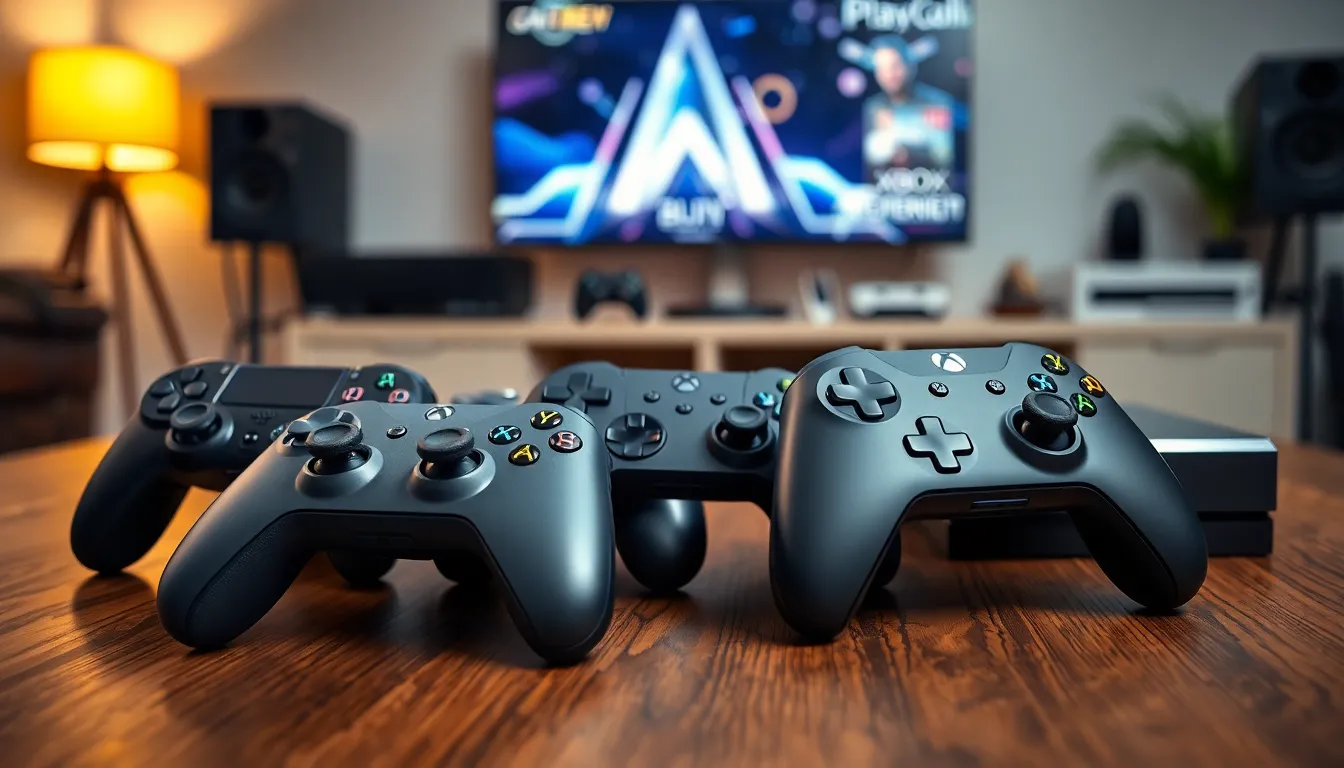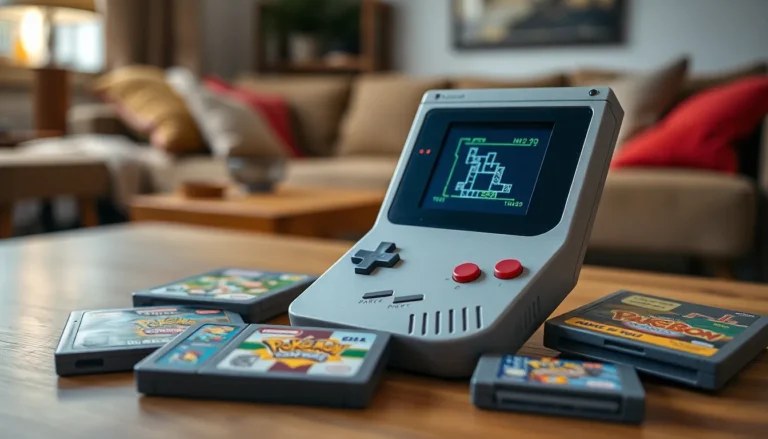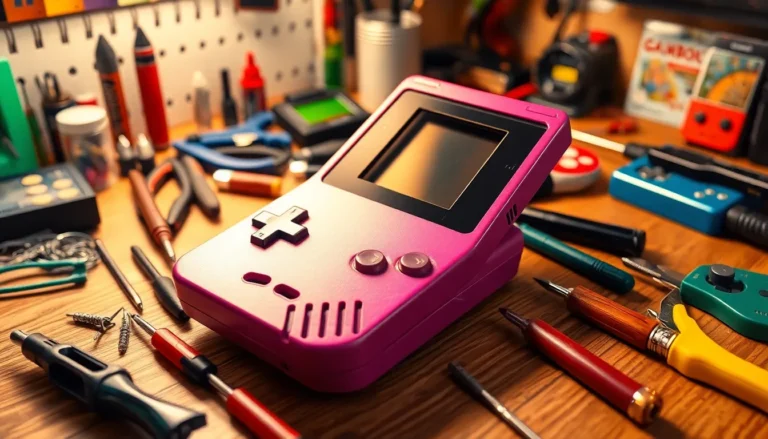In a world where dragons roam and treacherous landscapes await, mastering the art of combat in Elden Ring is no small feat. For many players, the controller is not just a tool; it’s an extension of their very being. Imagine tackling a massive boss with the finesse of a seasoned warrior, all thanks to the perfect controller setup.
Table of Contents
ToggleOverview of Elden Ring Controller Support
Elden Ring provides robust controller support, catering to various gaming preferences. Players can expect seamless integration with multiple controllers, including popular options like Xbox and PlayStation. Users often find that connecting their controller enhances responsiveness during intense combat sequences.
Customization options are available, allowing gamers to adjust button mappings and sensitivity settings. Configuring presets for different playstyles further refines individual gameplay experiences. Many players report that fine-tuning these settings leads to improved performance against challenging bosses.
The game supports both wired and wireless controllers, offering versatility in connectivity. This flexibility ensures players can choose their preferred setup without sacrificing functionality. Compatibility extends to various input methods, including joystick configurations and additional peripherals.
In terms of accessibility, Elden Ring accommodates different gameplay styles with its controller layout. Players can effortlessly switch between input methods and still maintain control. Feedback from the gaming community emphasizes how these features contribute to a more inclusive environment for both new and seasoned players.
Despite its strengths, some users note occasional input lag during specific gameplay scenarios. This underlines the importance of optimizing controller setup before engaging in difficult encounters. Overall, Elden Ring’s focus on controller support greatly enhances the gaming experience, making it necessary for players to find the right configuration to master the game.
Supported Controllers

Elden Ring offers versatile controller support for an enhanced gaming experience. Players can enjoy seamless integration with various controller models, contributing to better gameplay.
PlayStation Controllers
PlayStation controllers, including DualShock 4 and DualSense, fully support Elden Ring. Both options allow customization of button mappings and sensitivity settings. Players appreciate the responsive triggers and haptic feedback of the DualSense, which intensifies immersion. Enhanced precision in combat makes these controllers popular among gamers. Many have noted improved performance when using PlayStation controllers against challenging bosses.
Xbox Controllers
Xbox controllers provide equally robust support for Elden Ring, encompassing models like the Xbox One and Xbox Series X controllers. Players can customize controls and enjoy features like textured grips for better handling. The ergonomic design ensures comfort during lengthy sessions. Additionally, the responsiveness of these controllers enhances combat capabilities, allowing for swift maneuvers. Gamers frequently opt for Xbox controllers due to their compatibility and reliability.
Third-Party Controllers
Third-party controllers also work well with Elden Ring, including well-known brands like Razer and Logitech. These alternative options offer unique features, such as customizable buttons and adjustable weights. Many third-party controllers maintain high-quality ergonomics and responsiveness, comparable to first-party options. Players often appreciate the broader selection available, allowing for personalized gameplay experiences. Feedback from the community highlights the value of considering third-party controllers for optimized performance.
Controller Settings and Customization
Elden Ring offers extensive controller settings and customization options that enable players to tailor their gameplay experience. Fine-tuning these settings often leads to improved performance during challenging encounters.
Button Mapping
Button mapping allows players to customize control schemes according to their preferences. Users can reassign functions for essential actions, such as attacks, dodges, and item uses. Flexibility in these settings empowers players to optimize their gameplay, accommodating personal play styles. For instance, swapping the dodge command to a more accessible button can make evading enemies easier. Many players find that using their preferred configurations enhances not only comfort but also response times in high-stakes situations. Additionally, both Xbox and PlayStation controllers support this feature, making it widely available across platforms.
Sensitivity Adjustments
Sensitivity adjustments play a crucial role in achieving precise control during combat. Players can modify settings for both aim and camera movement, allowing for fine-tuned accuracy in attacking and dodging. Customizable sensitivity levels help accommodate individual preferences, such as those who prefer faster camera movements or those who favor precision. This ability to balance sensitivity often proves vital for executing successful maneuvers during boss battles. Furthermore, players who take the time to adjust these settings frequently report significant improvements in their overall performance. Many gaming communities share tips on ideal sensitivity configurations, fostering collaboration among players for a better gaming experience in Elden Ring.
Gameplay Experience with Controllers
Elden Ring offers an immersive gameplay experience, particularly with a controller in hand. Players can master combat mechanics and navigate the vast world more fluidly.
Combat Mechanics
Combat mechanics within Elden Ring thrive on precise inputs. Players appreciate the responsive nature of controllers, which facilitates split-second actions like attacking and dodging. Custom button mappings allow for tailored combat strategies, adapting to each player’s unique style. Controllers like the DualSense enhance gameplay through haptic feedback, providing tactile sensations that heighten immersion. Performance against bosses improves with optimized sensitivity settings, creating a significant advantage during intricate battles. With the right setup, every strike and dodge feels impactful, reinforcing the need for a personal touch in controller configurations.
Navigation and Exploration
Navigation and exploration become intuitive with a controller. The analog sticks provide fluid movement across Elden Ring’s expansive landscapes. Customizable camera sensitivity enables smoother tracking of enemies and surroundings, crucial for avoiding ambushes. Players navigate diverse terrains effortlessly, whether climbing cliffs or traversing dense forests. Xbox controllers, known for their ergonomic design, ease long exploration sessions without discomfort. With well-tuned settings, players discover hidden secrets, making the adventure more rewarding. Controller support enriches the exploration experience by ensuring responsiveness and comfort across various gameplay scenarios.
Common Issues and Troubleshooting
Players may encounter several issues while using controllers in Elden Ring. Troubleshooting these problems can enhance gameplay and optimize performance.
Connection Problems
Connection issues often arise with both wired and wireless controllers. Players using wireless models might experience intermittent disconnections due to Bluetooth interference. Ensuring the controller is fully charged can mitigate battery-related disruptions. Another common issue involves the USB ports for wired controllers, which may need cleaning or reconnecting. Some players report the need to restart their game or console to establish a stable connection. Verifying controller compatibility can also prevent connectivity issues, especially with third-party options. Regular updates for the game and console firmware can further enhance connectivity stability.
Sensitivity Issues
Sensitivity settings often require adjustment for a better gaming experience. Some players notice that default sensitivity levels may not align with their preferred play style. Adjusting the aim sensitivity allows for more precise targeting, especially during combat. Camera sensitivity plays a crucial role in fluid navigation, helping to track fast-moving enemies effectively. Players accustomed to rapid movements might prefer higher sensitivity levels, while others may find lower settings help with accuracy. Experimenting with these settings in practice modes can lead to significant enhancements in performance during real encounters. Engaging with community forums can provide valuable insights into optimal sensitivity configurations.
Elden Ring’s controller support plays a vital role in shaping the gaming experience. With the ability to customize settings and choose from various controller options players can enhance their performance and enjoyment. The integration of features like haptic feedback and adjustable sensitivity ensures that every action feels precise and impactful.
As players navigate the challenging landscapes and formidable foes they’ll find that a well-optimized controller setup can make all the difference. By taking the time to fine-tune their configurations they can overcome obstacles and fully immerse themselves in the game’s rich world. Ultimately the right controller can transform the journey through Elden Ring into a truly unforgettable adventure.









